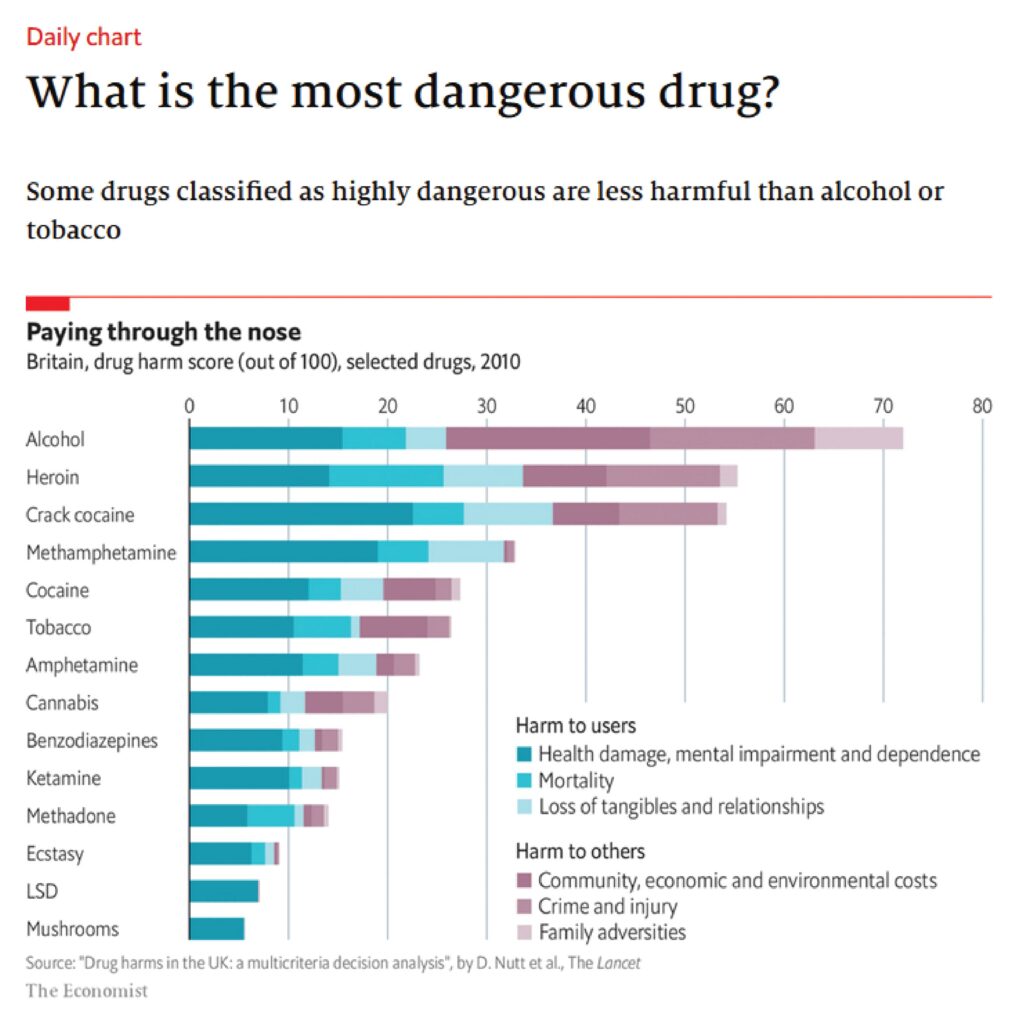MDMA Guide
What is MDMA?
MDMA , also known as “Molly” (short for molecular), belongs to a family of drugs called entactogens (“touching within”).
MDMA was popularized by use in party (specifically rave) communities, as well as more intimate social environments.
Before it was made illegal in 1985, MDMA was a medication introduced to psychotherapy by Dr. Alexander Shulgin. Studies are currently evaluating the effectiveness of MDMA in PTSD treatment. It is on track to be approved by the FDA as a prescription medication in 2023.
Above shows a chart from The Economist listing a wide range of substances and the overall effects it has on the user as well as the community.
What are the Effects?
Physical effects of MDMA include enhanced tactile sensation and typical simulant effects around increased blood pressure and heart rate. Users may also experience dehydration, teeth grinding, eye wiggles and difficulty urinating.
Cognitive effects of MDMA include euphoria, feelings of wellbeing and increased sociability. People also experience heightened feelings of empathy, emotional warmth, openness and self-acceptance.
MDMA is typically swallowed as a tablet of capsule. Effects are typically felt within 20 to 40 minutes and the peak effects typically last around 90 to 120 minutes. The total duration is about 3 to 5 hours.
Most users say the experience is very pleasant and highly controllable. It is very rare for an MDMA “roll” to be frightening or unpleasant, although under-dosing (doing too little) can feel very uncomfortable, and doing too much can be a lot to handle.

What’s a Typical Dose?
For most people, a standard dose of MDMA is between 80 to 125mg. Some people require more to feel the desired effects, while others require less. (Note: Needing to take more and more MDMA to feel it properly indicates that you are building a tolerance and may be rolling too frequently.)
Taking a single redose of 1/3 to 1/2 of the original dose around 90 minutes later can extend the peak of the experience by a few hours. Redosing any more than this will usually only increase the chance of an MDMA hangover.
Although many users experience a pleasant mood the following day (afterglow), some may experience sadness, irritability or emotional exhaustion in the days after MDMA “blues”.
To minimize the tolerance buildup of MDMA and the blues, try to space out your rolls by 3 months and try not to increase your normal dose if it is working for you.
MDMA is not physically dependence-forming, but it can take on great importance in people’s lives. Some people then start compulsively using it every weekend.
If taken too frequently, MDMA can stop working like it once did. Users report that the “magic” starts going away. This can last for an indefinite amount of time.
So make sure your MDMA is tested with a reagent test kit (Marquis, Froede, Mecke, Simon A + Simon B) and make sure to space out your rolls.


